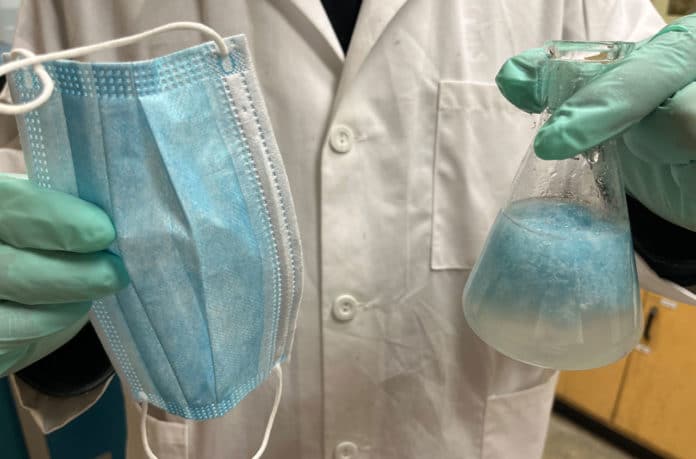Used face masks resulting from the pandemic are forming a new waste stream. If they are not properly disposed of or reused, these used masks can remain in the environment for decades and pose a risk to the ecosystem.
Now, a Washington State University research team has demonstrated the idea of incorporating old masks into a cement mixture to create stronger, more durable concrete.
Cracks are the main problem of mass concrete. Adding tiny reinforcing microfibers to cement concrete can potentially strengthen it, but they’re expensive. The microfiber-reinforced concrete can also reduce the amount of cement needed for a project or make the concrete last longer, saving carbon emissions emitted during its production as well as money for builders and owners.
The WSU researchers wondered if polypropylene or polyester fabric in medical masks could be useful for the concrete industry. In their proof-of-concept work, the researchers first removed the metal nose bridges and cotton ear loops from disposable surgical masks and cut the remaining fabric into fibers ranging from five to 30 millimeters in length. They then added them to cement concrete to strengthen it and prevent its cracking.
Before adding them to the cement paste, the mask microfibers were treated into a solution of graphene oxide, which provides ultrathin layers that strongly adhere to the fiber surfaces. Such mask microfibers absorb or dissipate the fracture energy that would contribute to tiny cracks in the concrete.
For their testing, researchers incorporated the graphene oxide-treated microfibers into ordinary Portland cement, the most common type of cement used around the world and the basic ingredient for concrete, mortar, and grout. The mask fibers admixed at a volume of 0.1% showed great potential for improving the splitting tensile strength by 47% after a month of curing. It should be noted that they slightly decreased the compressive strength of the paste, although only by 3%.
Further tests will be conducted to test that the graphene oxide-treated microfibers could also improve the durability of the concrete and protect it from frost damage and from deicing chemicals that are used on roadways. The researchers also envision applying this technology to the recycling of other polymer materials such as discarded clothing to incentivize the collection of such waste.
“This work showcases one technology to divert the used masks from the waste stream to a high-value application,” said Xianming Shi, professor and interim chair of the Department of Civil and Environmental Engineering and the corresponding author of the paper.
